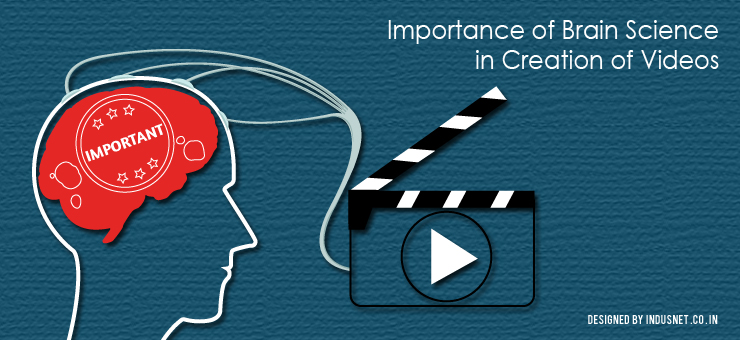
If you thought neuroscience, psychology and the human brain didn’t have anything to do with explainer videos, think again. The fact that we are opting for videos than publishing text is a sign that people inherently are hard wired to appreciate visual content than textual content.
Neuromarketing and its importance in the field of explainer videos
Explainer videos, which are short animated movies that describe products, services and businesses, are a great way to connect with the target audience. The main reason why explainer videos are so successful is because the human brain perceives the video format more favorably than textual content. Explainer videos stimulate auditory and visual senses, whereas text remains, well just text.
As videos stimulate the viewer, they have a higher chance of resulting in the desired effect, whatever that might be. In fact, the importance of human brain and understanding why it prefers visual media has led to a whole new field of marketing called “neuromarketing”. Neuromarketing not only involves understanding why people prefer certain formats but also why they prefer certain colors, smells and sounds.
Let us take a look at some of the neurological and psychological aspects of visual processing:
1. 93% of communication is non-verbal
Psychologist Albert Mehrabian revealed in a study that 93% of the communication that takes place is non-verbal. Human brain processes image elements instantaneously, whereas, textual information takes a few more nanoseconds to reach our brains.
2. Earliest forms of communication was visual
When the prehistoric people wanted to communicate, they did not write things down. Instead, they used stones and bones to carve pictures and symbols into the walls of caves, on to rocks and elsewhere. We are innately hard wired to process video elements more than textual elements.
3. People think using images
A media theorist named John Berger concluded that seeing comes much before words. His book “Ways of Seeing” is an excellent read to understand why videos are much better than textual content, at least some of the times. As our ancestors spent time in the Savannahs of Arica before migrating to the other parts of the world, they developed a very keen sense of visual communication.
4. Words are processed by short term memory
Words, when they reach our brains, are processed by short term memory. Later, this information is practiced and stored in long term memory. On the other hand, visual information is already present in our minds. We merely recognize the patterns and recall from information that is already stored in our brains. This makes processing of videos much easier than text for human brains.
5. Visual aids are more effective
A research conducted by the University of Minnesota School of Management found that those who use visual aid are 43% more successful at convincing an audience than those who do not. The study was sponsored by 3M and was one of the reasons why presentations, as we know them today, become so very important in the field of marketing.
6. Audio-visual mix
As explainer videos are a mix of audio and video, they bombard the human brain with enough stimuli to make sure that they leave a lasting impact on it. Textual content on the other hand requires more concentration, attention and interest. For those who are not really interested in what you have to say, an explainer video works better.
Back your marketing strategy with psychological science
If you truly want to succeed in your business, your basis should lie in science. You need to understand the science of buying and the psychology of audience’ attention. All this can only happen when you begin to understand certain aspects of neuromarketing. As for now, it is becoming increasingly clear that explainer videos are successful in increasing sales.
This is backed by psychological and neurological studies, which show that human brains are attuned to visual information more than just textual information. With this in mind, you might want to invest more in better explainer videos that are short, crisp and effective. If you are unable to do it on your own, you could go ahead and seek the help of professionals, who will be able to guide you better.
For any assistance regarding explainer video creation, get in touch with Oomphbox.